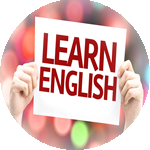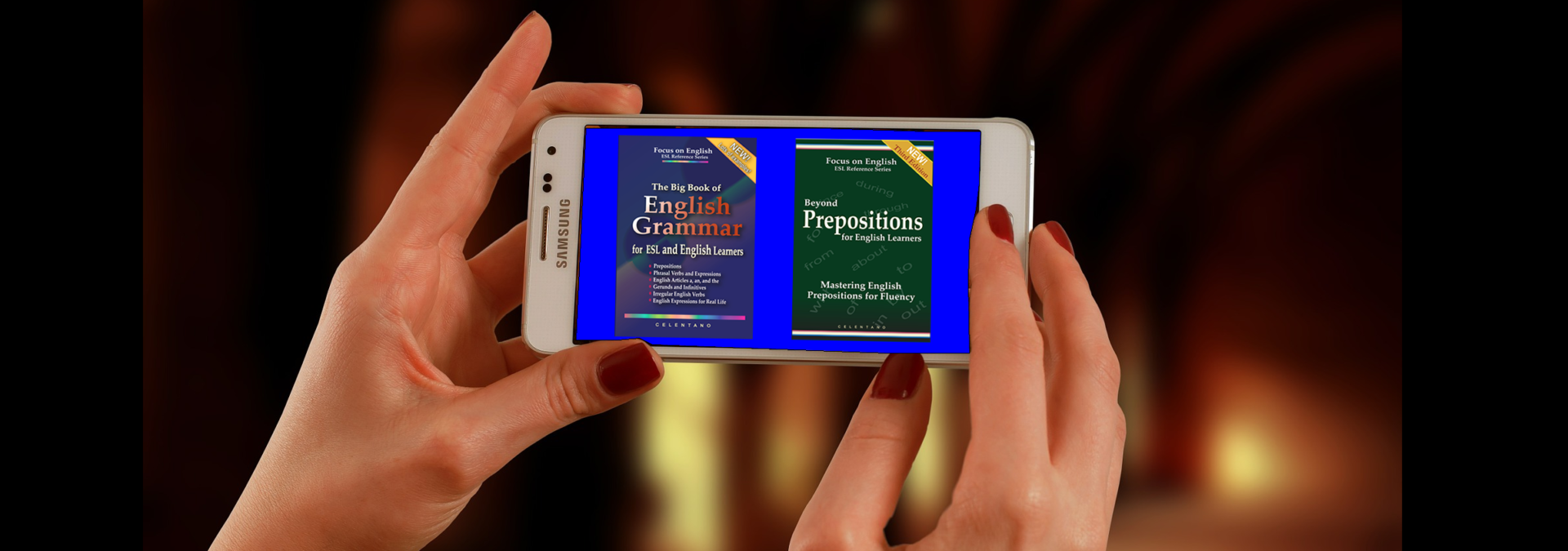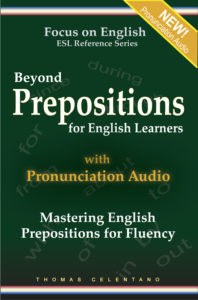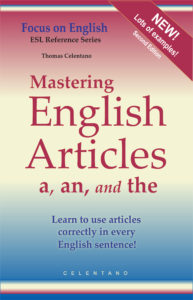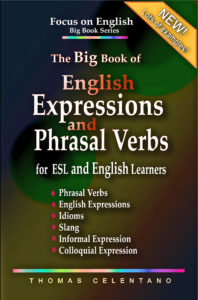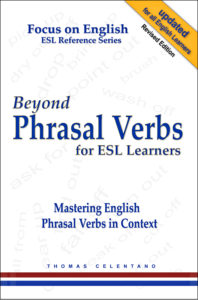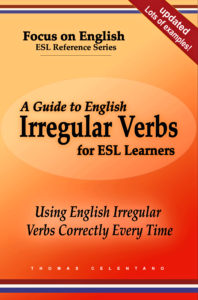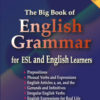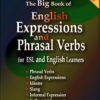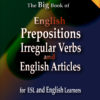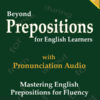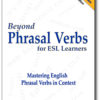Learn English Word Order: Part 1 and Part 2:
"The Man Who Dances with Birds", for ESL Learners
(MOBILE PHONE VIEWERS: if you are viewing this page on a MOBILE PHONE, scroll down to the bottom to see our English books and English audio books)
"Learn English Word Order" TEXT:
Instructions: The text in the video can be found below. Pause the video with the text that you want to see and remember the video timestamp for that spot. Now scroll down and look below for the timestamp closest to the one you remembered and you will find the text from that timestamp printed. Now, if necessary, use our TRANSLATE button in the top right corner of this page or copy and paste the text into your translator. ( For example: In the video at 2:02 we find the text, "In our lesson, we will use colors to represent the word order in English sentences". Now scroll down and look below for the timestamp closest to 2:02 and you will find this text printed.)
PART 1: LESSON
0:03 - Hello and welcome to Learn to speak English well!
0:18 - Word order in English sentences! AND How we describe people, places and Things in English sentences [and why this is SO important]!
0:23 - 0:30 - And to help us with our English lesson today we are going to take a walk in a very special park in Hawaii and see the Man who Dances with the birds.
0:41 - For low-intermediate through advanced ESL and English learners
0:48 - 0:59 - From the author of "The Big Book of English Grammar for ESL and English learners". Look in the description below this video for more information about how to get our English books.
1:01 - Let's begin
1:05 - This lesson is printed in the description below this video for easy copy and paste translation.
1:14 - In this lesson we will learn about word order in English sentences . . .
1:19 - How English speakers form their sentences
1:24 - We will also learn about how we describe people, places and things in English
1:30 - how we use adjectives and adverbs to describe details
1:35 - And you will also learn more about how we tell stories in English
1:42 - After this lesson, please watch the movie about the man who dances with birds
1:52 - The movie will help you practice what you have just learned
1:56 - So, let's learn how English speakers build their sentences
2:03 - In our lesson, we will use colors to represent the word order in English sentences
2:09 - 2:18 - Nouns are this color, as in this example: "The white dog loves to run." Nouns are the main reason for the sentence, the subject; the noun is usually what the sentence is talking about
2:23 - 2:31 - Verbs are this color, as in this example: "The man walks home." The verb usually comes after the noun and tells us about the action in the sentence or that something exists
2:41 - Articles are this color, as in this example: "The man walks home."
2:48 - 2:57 - Articles are important in English because they point to a specific noun in the sentence; for example: the boy follows the ice cream truck ("the" means we know which boy).
3:06 - 3:14 - Using the article "a" means we are talking about any boy, as in this example "a boy is not allowed in a place where they serve alcohol.")
3:24 - 3:39 - Pronouns are this color, as in this example: "He walks home." He walks home can mean that Jim, for example, walks home; he refers to Jim. It hurts my stomach can mean that a pineapple, for example, hurts my stomach.
3:47 - 4:15 - Adverbs are this color, as in this example: "The park is always beautiful" Adverbs tell us more about a verb or an adverb that follows; adverbs tell us how, when, where and how much. For example, "the park is always beautiful". Many times, adverbs end in ly as in this example: "He usually does his homework."
4:19 - 4:36 - Conjunctions are this color, as in this example: "The man and the birds" Conjunctions join two parts of the same sentence. Another conjunction is the word "but", as in this example: "She goes to work everyday but she doesn't like her job."
4:45 - 5:01 - Adjectives are this color, as in this example: "The beautiful birds." Adjectives tell us more about the noun that follows, as in this example: "The red house." The adjective "red" tells us about the color of the house.
5:05 - 5:35 - Prepositions are this color, as in this example: "The birds are on the grass" Prepositions are sometimes used before a noun or pronoun, to show direction, time, place, location, or to introduce an object. Prepositions are very common in English phrasal verbs and English expressions as in this example: "He gets up at 5am every day."
5:39 - Lesson
5:44 - 6:33 - There was a man who often used to go to a magic park in Hawaii. The word there has many uses in English; in this sentence, there is a kind of pronoun even though the main subject of this sentence is man. There was (or there is) a man means a man exists who [does or is something]. Using there was (or there is) is a way of focusing on the subject of the sentence. Used to go is an English past tense verb that means that something continuously happened in the past but no longer happens now.
6:37 - 7:14 - On most days, you could see him walking and dancing with the birds in the park. In the sentence, "you could see him walking" the word could means might or may, or probably will see him walking. The words walking and dancing in this sentence are gerunds. To learn more about gerunds and infinitives, please see our book, "The Big Book of English Gerunds & Infinitives, Prepositions, and Phrasal Verbs for ESL and English Learners".
7:20 - 7:27 - The man always wore the same clothes every day . . . ; Note the use of the adverb always in this sentence: adverbs can describe how often something happens
7:40 - 7:48 - a white floppy hat and a white, long sleeve shirt, and . . . ; a floppy hat is a hat with a brim that is not ridged or stiff.
8:01 - 8:16 - gray shorts, white socks, and white and black sports shoes; there are many words for sports shoes in English: running shoes, basketball sneaks, tennis shoes, walking shoes . . . as you can see, these kinds of shoes have names depending on which sport they are used for.
8:21 - 9:06 - This park is a magical park in Hawaii . . . ; The adjective magical in this sentence is used to help create an image in the mind of the viewer or reader. How is the park magical? The park is magical because there are so many different kinds of activities that go on there that it seems almost impossible. For example, to have weddings and surfing and Hawaiian canoes, sailboat races, yoga and Buddhist monks and musicians and so on, all of the diverse activity makes the park very unusual, almost magical.
9:12 - 9:26 - People come to this park to get married . . . ; As you will see in just a moment, we can also say "some" come to this park to get married . . . meaning some people some to this park to get married.
9:29 - 10:12 - People come to this park to exercise, do tai qi and practice yoga . . . ; we have different ways of talking about sports in English: we play soccer, play tennis, play basketball, but we do or practice yoga, tai qi, or martial arts. The word practice can also mean to work as a lawyer or as a doctor as in these examples: Dr. Sanchez practices medicine, The attorney, Mr. Wong, practices law. Meaning, they offer these services to the public.
10:15 - 10:33 - Buddhist monks come to this park to practice peace . . . ; The word practice can also talk about moral quality, such as good or evil or a healthy or unhealthy habit. In this sentence, where ever the monk goes, he practices peace.
10:40 - 11:07 - Some come to this park to go surfing, to go fishing, and . . . ; as with many sports, in English we say that I go surfing, go hiking, go fishing, go sailing. As in this example: Tomorrow I'm going hiking in the mountains. Notice the use of the word "some" at the beginning of this sentence. This means "some people".
11:12 - 11:33 - Sail their sailboats and paddle their canoes . . . ; In English we paddle a canoe or a kayak, but we row a rowboat (a rowboat uses oars, we sail a sailboat but we go boating on a powerboat or a boat with a motor (but no sails).
11:38 - 12:09 - but the only reason why this man comes to the park . . . ; combining the words reason and why together, as in this sentence, is technically not correct, but this idiom expression "the reason why" is very common in written and spoken English; as in all languages, idioms and expressions are sometimes more important than grammar rules.
12:12 - 12:40 is to dance with the birds ; to dance in this sentence is called an infinitive, made up of the preposition to and a verb. To learn more about gerunds and infinitives, please see our book, "The Big Book of English Gerunds & Infinitives, Prepositions, and Phrasal Verbs for ESL and English Learners".
12:43 - Okay, now go to part 2, the movie: "A Little Walk in the Park and the Man Who Dances with Birds" for a fun lesson review!
PART 2, THE MOVIE: "A WALK IN THE PARK AND THE MAN WHO DANCES WITH BIRDS"
13:13 - From the author of "The Big Book of English Grammar for ESL and English Learners"; get this book in the description below this video.
13:23 - A Walk in the Park and the Man Who Dances with Birds
13:31 - Please remember to watch PART 1 of this video.
13:38 - This is the man who dances with birds . . .
13:47 - in a magic park somewhere in Hawaii
13:58 - He comes here almost every day.
14:15 - some people come to the park to get married
14:38 - some come to practice their sport
14:49 - some come to practice dancing the hula
15:00 - some come to practice yoga
15:14 - Buddhist monks come here to practice peace
15:37 - some come here to go fishing
15:58 - some come here to sing and play ukulele
16:14 - but he comes here to dance with the birds
16:31 - some come here to kayak fish around the park coastline
17:03 - some come to sail their RC sailboats in the lagoon
17:13 - and some race their sailboats next to the park
17:24 - while some come to race their Hawaiian canoes
17:47 - some come here to surf
18:03 - some come here to swim in the park's lagoon
18:17 - some come to boogieboard
19:13 - some come here to share their music
19:35 - some people come here to fly their dragons
20:26 - . . . but this man comes here . . .
20:34 - . . . just to dance with the birds
20:45 - written and produced by Thomas Celentano
20:52 - Thomas Celentano is also the author of "The big book of English grammar for ESL and English learners", "Beyond Prepositions for ESL and English learners", and "Beyond Phrasal verbs for ESL and English learners"
